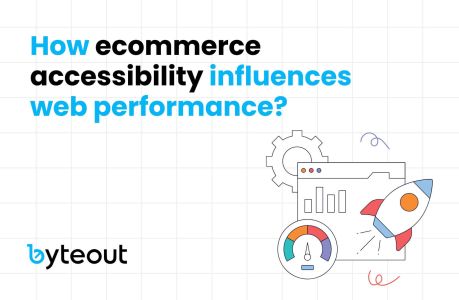
How ecommerce accessibility influences web performance?
In recent years, ecommerce accessibility has become a big aspect of online retail, not just for ensuring inclusivity but also for improving web performance. Since we specialize in website accessibility, we have observed firsthand how optimizing for accessibility can significantly boost site speed, SEO, and user engagement. Let’s see how!
Table of Contents
The impact of accessibility on site speed
Firstly, ecommerce accessibility often requires a cleaner, more streamlined codebase. Accessible websites tend to minimize unnecessary elements that can slow down page loading times.
Focusing on key accessibility principles, like semantic HTML and efficient ARIA (Accessible Rich Internet Applications) labels, can reduce your pages’ load time. This helps users with disabilities and improves the browsing experience for all users, leading to better engagement and reduced bounce rates.
SEO benefits of ecommerce accessibility
Ecommerce accessibility also has a direct impact on SEO. Search engines favor websites that are accessible to a broader audience, including those with disabilities. You can enhance your website’s discoverability by ensuring it supports screen readers and has proper alt tags for images.
Moreover, an accessible website tends to have a clearer structure and better-organized content, which search engines reward with higher rankings. This visibility is very important for driving more organic traffic to your ecommerce site.

User experience and conversion rates
Working on ecommerce accessibility also means improving the overall user experience, which directly influences conversion rates. An accessible website is easier to navigate, making it more likely that visitors will complete a purchase.
Simplifying navigation elements, ensuring keyboard accessibility, and providing sufficient contrast ratios are just a few ways to make your site more user-friendly. These adjustments help individuals with disabilities but also those browsing in low-light conditions or on smaller devices.
Legal compliance and brand reputation
The importance of ecommerce accessibility extends beyond performance—it also touches on legal compliance and brand reputation. Many regions have regulations requiring digital accessibility (like the ADA in the United States), and non-compliance can lead to costly lawsuits. By proactively making your ecommerce site accessible, you avoid legal risks and position your brand as socially responsible, improving customer loyalty and trust.
- AI and Google Search in ecommerce – what is going on?
- Amazon DTC: How to own the customer experience
- Selling on Shopify and Amazon: Smart ecommerce strategy in 2025
- Amazon FBA vs Shopify: Which one builds a real brand?
- Best Amazon FBA course: Top picks for 2025
How can we help make your ecommerce site accessible?
Understanding and implementing ecommerce accessibility can be daunting, but you don’t have to do it alone. We have an established process of auditing ecommerce websites, identifying areas for improvement, and implementing changes that comply with global accessibility standards.
Why ecommerce accessibility should be a top priority of any site’s performance and user experience? Ecommerce accessibility directly affects your site in terms of
- functionality,
- SEO,
- and conversion rates,
all while building a positive brand image. Let us help you transform your site into a model of accessibility and efficiency!

